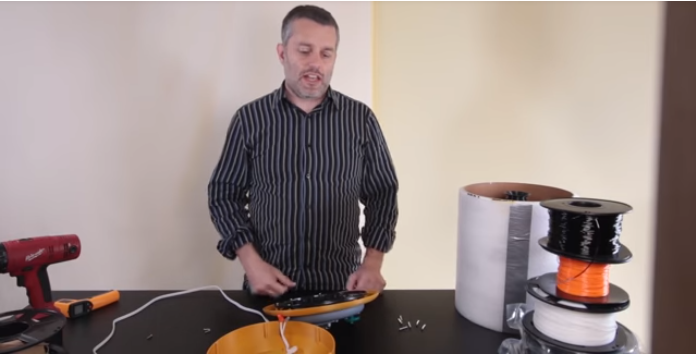Most everyone who 3D prints regularly knows that damp filament is a bad thing, but it can be hard to prevent, especially in certain climates, as some filaments such as nylon and PLA love to absorb moisture from the air. This can lead to a number of problems that ultimately cause failed or imperfect and failed prints. Filament becomes brittle and breaks during printing as well. There are plenty of commercial filament drying solutions out there, but why not try making your own inexpensive dryer? That’s what two 3D printing enthusiasts did, and they shared their knowledge with the rest of the world via YouTube.
The first instructor, from the channel Design Prototype Test, found a $30 600W food dehydrator at Walmart, because, as he says, most commercial filament dryers are basically “glorified food dehydrators.” However, the heater in the food dehydrator did not get hot enough to get the filament dry. So he took a form tube, used for pouring concrete, that he bought for $10 and wrapped it in a foam sheet that had come from the packaging of one of his 3D printers. He then took the “guts” of the food dehydrator and fixed them to a 3D printed lid that went over the tube. A smaller tube in the middle of the device has hot air blasted down it and circulates the air throughout the larger tube. The device still, however, did not get hot enough.
After taking the device apart, he concludes that there is nothing to be done to get the dryer hotter – but that as a first attempt, the design shows potential. He plans to try it again with a hotter, more high-end food dehydrator in the future.
The second video comes from 3D printing expert Richard Horne, aka RichRap. His idea for a filament dryer was inspired by dryers used by E3D and Polymaker, but he modified their ideas to be less expensive and more versatile. He started with an 11-liter plastic box that he found on eBay, and added a small heating element, originally intended to heat reptile cages, ordered from China for only a few dollars. Horne then 3D printed two parts that snap together to hold a temperature and humidity monitoring device. He also 3D printed a filament spool holder, as well as a piece that the heating element can slide into and heat up below the filament holder. Desiccant gel packs were added to the bottom of the box.
Cable connections were added so that the filament can come out of the box and into the 3D printer – Horne wanted a device that would allow the filament to print as it was being dried. He also 3D printed a flexible seal for the top of the box. Finally, Horne demonstrates a quick humidity monitoring system – a 3D printed holder that can slide into the center of a filament spool and hold one of the temperature and humidity monitors mentioned above. This is an easy way to keep an eye on the moisture of filament stored in plastic bags.
Horne’s filament drying system proved to be effective, and cost less than $20. He put the files for the 3D printable parts up on Thingiverse and Youmagine so that anyone can reproduce them.
Discuss this and other 3D printing topics at 3DPrintBoard.com or share your thoughts below.
